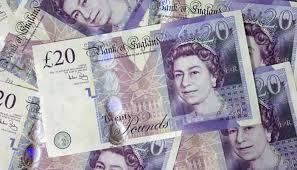Introduction
In today’s globalized economy, currency exchange rates play a pivotal role in international trade, travel, and investment. For Pakistan, the exchange rate between the British Pound (GBP) and the Pakistani Rupee (PKR) holds significant importance due to historical ties and economic relations between the two countries. Pound Rate Today in Pakistan.
Define the Exchange Rate
The Pound to Pakistani Rupee exchange rate refers to the value of one British Pound in terms of Pakistani Rupees. This rate fluctuates based on various factors such as economic indicators, geopolitical events, and market sentiment.
Importance of Exchange Rates
Exchange rates impact various aspects of the economy, including imports, exports, inflation, and foreign investment. For individuals, they influence the cost of goods and services, travel expenses, and remittances.
Types and Categories
Interbank Rate
The Interbank rate refers to the exchange rate at which banks buy and sell currencies among themselves. It serves as the benchmark for other exchange rates and is influenced by central bank policies and market demand.
Open Market Rate
The Open Market rate, also known as the Parallel Market rate, is determined by supply and demand dynamics in the foreign exchange market. It often deviates from the official interbank rate and reflects market sentiment and currency availability.
Symptoms and Signs
Currency Fluctuations
Fluctuations in the Pound to Pakistani Rupee exchange rate can occur due to economic indicators, such as GDP growth, inflation, and trade balance, as well as geopolitical events like Brexit and political instability in Pakistan.
Impact on Trade
A depreciating Pakistani Rupee relative to the Pound can make Pakistani exports more competitive in the UK market but increase the cost of imports from the UK, affecting trade balances and industries reliant on imported goods.
Causes and Risk Factors
Economic Indicators
Economic indicators such as inflation, interest rates, and GDP growth impact currency values. High inflation in Pakistan or low-interest rates in the UK can lead to a depreciation of the PKR against the GBP.
Political Stability
Political stability or instability in either country can influence investor confidence and currency values. Uncertainty or unrest in Pakistan may lead to capital flight and a depreciation of the Rupee.
Diagnosis and Tests
Exchange Rate Mechanisms
Central banks use various tools, including monetary policy adjustments and foreign exchange interventions, to stabilize exchange rates and mitigate excessive volatility.
Market Sentiment Analysis
Market participants analyze economic data releases, central bank statements, and geopolitical developments to anticipate currency movements and adjust their trading strategies accordingly.
Treatment Options
Hedging Strategies
Businesses and investors can use financial instruments such as forward contracts, options, and futures to hedge against currency risk and mitigate potential losses from adverse exchange rate movements.
Diversification
Diversifying investment portfolios across different currencies and asset classes can reduce exposure to currency risk and provide a hedge against currency depreciation.
Preventive Measures
Economic Reforms
Implementing structural reforms to improve economic stability, enhance productivity, and attract foreign investment can strengthen the Pakistani Rupee and reduce dependency on external financing.
Fiscal Discipline
Maintaining fiscal discipline, such as controlling budget deficits and public debt, can bolster investor confidence and stabilize the currency exchange rate.
Personal Stories or Case Studies
Importer’s Dilemma
Ali, an importer in Pakistan, faced challenges when the Rupee depreciated against the Pound, increasing the cost of importing British goods. He adopted hedging strategies to mitigate currency risk and protect his profit margins.
Expatriate Experience
Sara, a British expatriate living in Pakistan, benefited from the Pound’s strength against the Rupee, enjoying a higher standard of living and increased purchasing power compared to her home country.
Expert Insights
Financial Analyst Perspective
According to financial analysts, the Pound to Pakistani Rupee exchange rate is influenced by macroeconomic factors, investor sentiment, and central bank policies. They recommend monitoring economic indicators and geopolitical developments for informed decision-making.
Conclusion
The Pound to Pakistani Rupee Rate Today UBL is a crucial determinant of economic activity and financial well-being for individuals, businesses, and policymakers in both countries. Understanding the factors affecting exchange rates and implementing appropriate risk management strategies can help mitigate currency risk and promote economic stability.
Frequently Asked Questions (FAQs)
-
What factors influence the Pound to Pakistani Rupee exchange rate?
- The exchange rate between the Pound and Pakistani Rupee is influenced by various factors such as economic indicators, geopolitical events, central bank policies, and market sentiment. Economic indicators like inflation, interest rates, and GDP growth in both countries play a significant role in determining the exchange rate. Geopolitical events such as Brexit and political instability in Pakistan can also impact currency values.
-
How often does the exchange rate between the Pound and Pakistani Rupee change?
- The exchange rate between the Pound and Pakistani Rupee is subject to frequent fluctuations due to the dynamic nature of the foreign exchange market. Exchange rates can change multiple times throughout the day in response to economic news, central bank interventions, and trading activity in the currency markets.
-
What is the difference between the interbank rate and the open market rate?
- The interbank rate refers to the exchange rate at which banks buy and sell currencies among themselves. It serves as the benchmark for other exchange rates and is typically used for large transactions. On the other hand, the open market rate, also known as the parallel market rate, is determined by supply and demand dynamics in the foreign exchange market and often deviates from the interbank rate.
-
How can individuals and businesses protect themselves against currency risk?
- Individuals and businesses can employ various hedging strategies to protect themselves against currency risk associated with fluctuations in the Pound to Pakistani Rupee exchange rate. Hedging strategies may include using forward contracts, options, futures, or diversifying investment portfolios across different currencies and asset classes.
-
What are the long-term implications of exchange rate movements on the economy?
- Exchange rate movements can have significant long-term implications for the economy, including affecting trade balances, inflation rates, foreign investment, and economic growth. A depreciating Pakistani Rupee relative to the Pound may boost exports but increase the cost of imports, leading to inflationary pressures. Conversely, a strengthening Rupee may improve purchasing power but could adversely impact export competitiveness. Central banks and policymakers often intervene in the foreign exchange market to manage exchange rate fluctuations and support economic stability.





